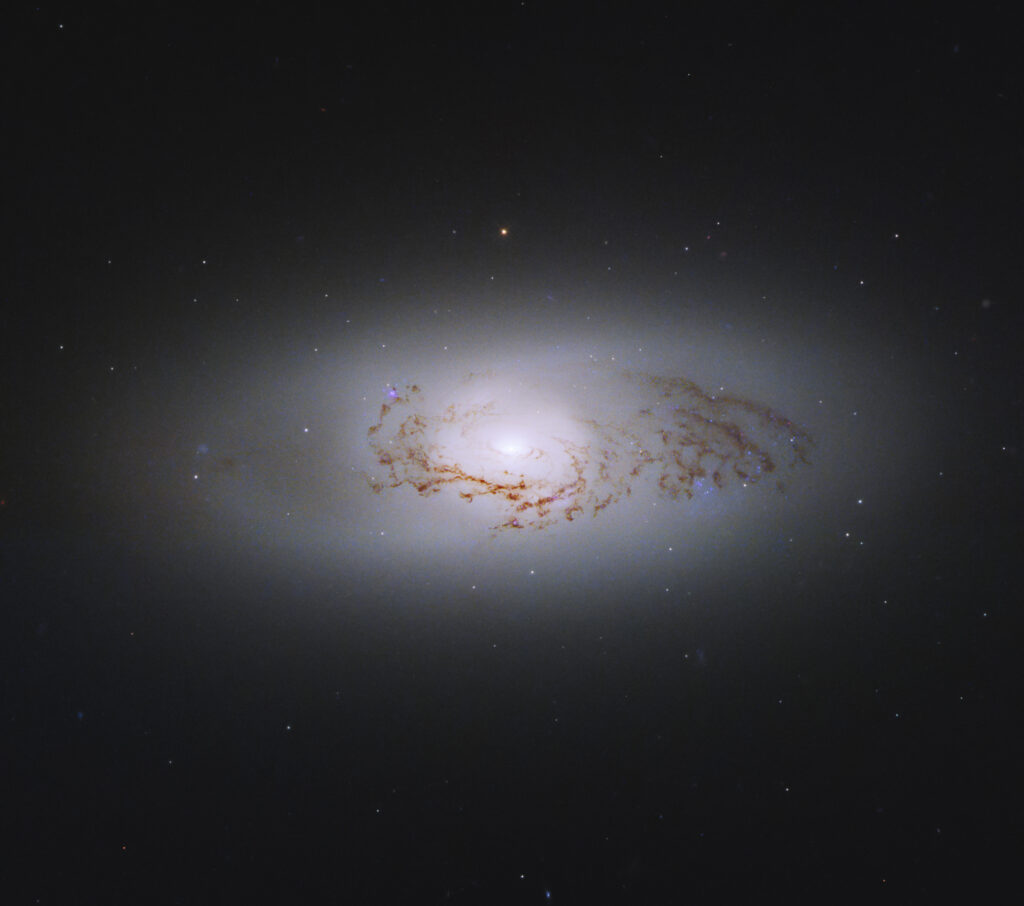NASA has published a new image obtained by the Hubble Space Telescope. It captures the lenticular galaxy NGC 3489. It is located at a distance of 30 million light-years from Earth in the direction of the constellation Leo.

Lenticular galaxies represent a transitional stage between spiral and elliptical galaxies. Like spiral galaxies, they have a disk and a bulge. At the same time, there is no spiral structure visible in them. Another important difference lies in the composition of the stellar population. As a rule, lenticular galaxies have already used up most of their gas reserves. Therefore, the rate of star formation in them is lowered. Lenticular galaxies are mostly inhabited by old luminaries, which makes them related to elliptical galaxies.
NGC 3489 has another distinctive feature. The fact is that its central region shows increased activity. Its source is a supermassive black hole. It actively absorbs the matter, which is accompanied by the formation of electromagnetic radiation.
At the same time, it can be noted that the nucleus of NGC 3489 does not overshadow the rest of the galaxy, this makes it possible to consider its structure. Astronomers classify such objects as Seyfert galaxies. It is believed that they account for up to 10% of all the “star islands” in the Universe.
Earlier we talked about how the James Webb Telescope found the oldest cluster of galaxies in the Universe.
According to https://www.nasa.gov
Follow us on Twitter to get the most interesting space news in time
https://twitter.com/ust_magazine

